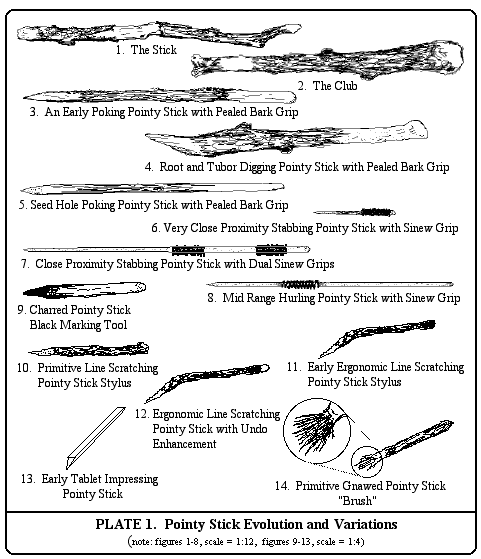A Brief History of The Pointy Stick - Development & Variations
A myriad of Pointy Stick types have developed over the eons, each with a specialized configuration and each filling a specific need of a particular culture and its state of evolution.

During the Hunter Gather phase of early civilization, the Poking/Stabbing Pointy Stick was THE predominant form of The Pointy Stick. Serving as both an offensive and defensive tool it could be used to poke holes in small to medium sized edible rodents and other mammals, as well as to discourage larger predators by well place pokes with the pointy end of The Pointy Stick. The Poking Pointy Stick was characterized by a relatively symetric, long point “whittled” on the end of an ordinary stick of the needed length. The pointyness of the “point” of these Pointy Sticks varied with the type of animal hide/skin/scales/feathers into which a poked hole was required. Long narrow, symetric about the long axis of the “stick”, “points” worked exceedingly well on easily poked/penetrated animals while shallower angled, less pointy “points” were found to be more durable and more effective on tougher skinned animals, though the latter required considerably more force and therefore stronger Pointy Stick Wielders. Until the advent of the ancestor of the stone Clovis “point”, thick skinned animals such as rhinos and mammoths were safe from human predation.